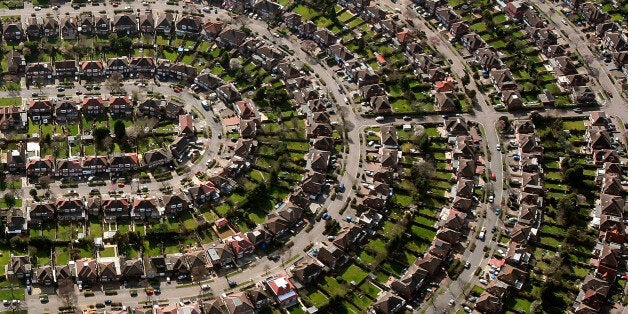
Our countries are increasingly diverse. Not just by ethnicity, but by age and income as well. By 2050, almost 40% of all Britons will be non-white. Fifteen years sooner, almost 50% will be children or pensioners - with half a century of life experience apart. Meanwhile we are likely to continue to see an increasing difference in life experience and income between skilled and unskilled Britons.
The challenge this growth of difference presents is the human tendency to split off with people who remind us of ourselves: our age, our education, our ethnicity, our income. Psychologists have a word for this bias - they call it 'homophily'; the rest of us have a childhood phrase: 'birds of a feather stick together'.
Successful human societies have always had a way to keep homophily in check - a set of institutions that brought different people together; we call it here the common life. Unfortunately the institutions that once characterised our common life: churches, trade unions and membership groups are in severe decline.
We are now starting to live with the consequences: an increased polarisation of politics, low trust of others, a rise in loneliness (especially amongst the elderly), growing inequalities in access and in connections to the job market, and a lack of common space to integrate new migrants into.
As a result, many of us live in a country full of difference, hidden from view by our own bubble full of similarity. Is it any wonder then, that when we look outside our bubble, our country sometimes feels foreign to us?
It is time to act - to build the new common life to replace the old. Some principles will guide our path. Firstly, we need to take the building of a common life seriously. The Victorians relied on charities to lead the charge on education and healthcare. They did not complete the job. The same is true of building a common life to achieve social integration. The government must lead, with vision and investment.
Secondly, we should focus on moments of transition. Starting school, becoming a young adult, starting your first job, settling in a new area, becoming a parent, retraining or retiring - it is during these moments of transition that we most want a new support group around us and when our identities are most in flux and open to new alliances.
Thirdly, we must ensure these moments of common life are intense and significant enough to create a shared identity. The focus on moments of transition will help: citizens training or retraining together, experiencing being a parent together or considering retirement together will bring its own intensity. But we must look to use other methods that have always created shared identity - sport, music and art.
Finally, we must put excellent marketing and design front and centre. In designing the common life we are up against a crowded market place for people's time. We must design institutions that are more attractive than the competition and appeal to people from all walks of life. We will need an approach that is led by government but unleashes the ingenuity of the private sector.
We know that these principles work; they gave us the best example of the common life we presently have--the National Citizen Service (NCS). The original vision was set by government and the programme was built to fit a moment of transition as young people become adults. The marketers were front and centre ensuring that it appeals to young people of all backgrounds and the energy came from the entrepreneurs who left their day jobs to set up a charity to build the programme. I know the story well. For the charity I work for was that charity and I was one of those entrepreneurs. Eight years later, almost one in six young people are taking part in the NCS--and it reaches and connects citizens of all incomes and backgrounds.
And yet, by itself, it is not enough. It is time to double down and push for the next NCS, the next element of our common life.
Let me finish with an analogy and a call to arms.
Over the next five years, the renewable energy market is projected to double in size. Private sector initiative and investment has pushed the market forward at pace. But it took the government to act to start this revolution. They moved to provide funding, subsidies and investment that unleashed the creativity. Why? Because they realised that the 'natural' market made it cheaper to pollute than to renew. The government intervened not to corrupt the market, but to correct it.
Right now, when designing and building activities that bring people together, it is cheaper to segregate than to integrate. Cheaper to build a youth programme that appeals to one group in society: the rich, the poor, one ethnic group or another, the high achievers, the left behind. It is time for the government to start to change this. To provide a similar set of subsidies, investments and incentives to entrepreneurs who connect and build a common life.
We have a Green Investment Bank, where is the Integration one?
This article is based on a chapter Jon Yates wrote for the report 'A Sense of Belonging: Building a more socially integrated society', published by the Fabian Society and Bright Blue, in partnership with The Challenge.